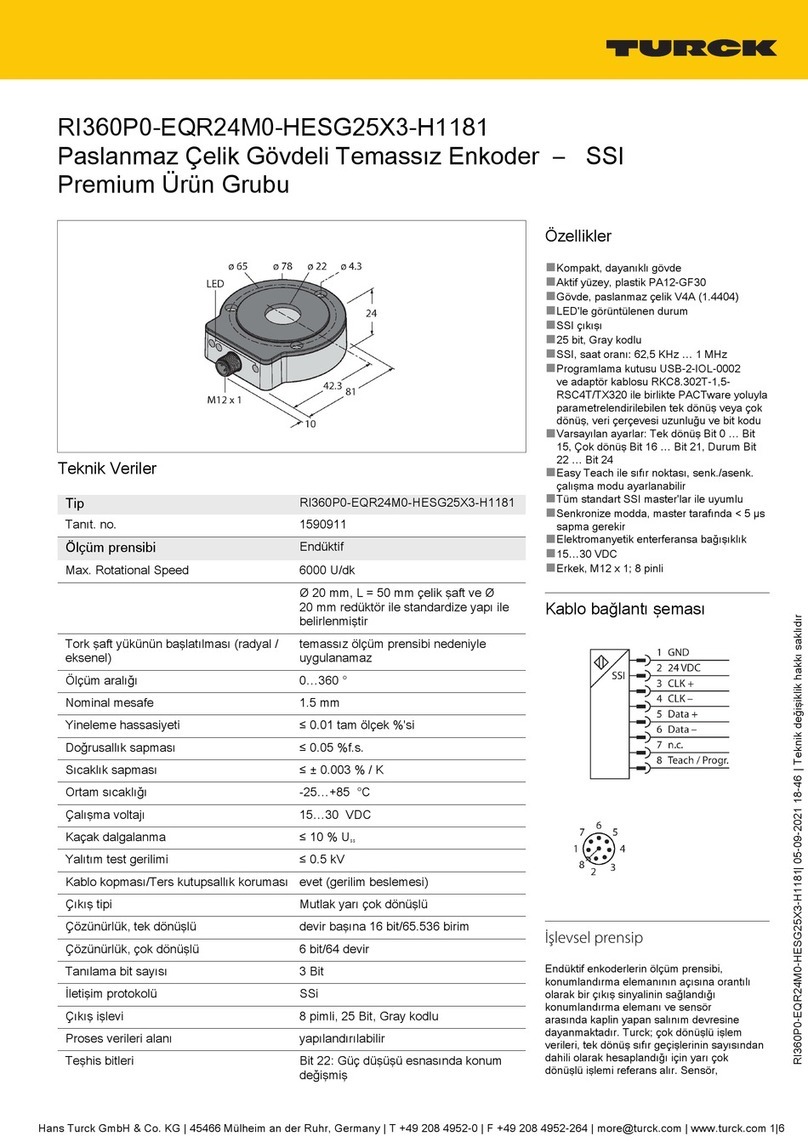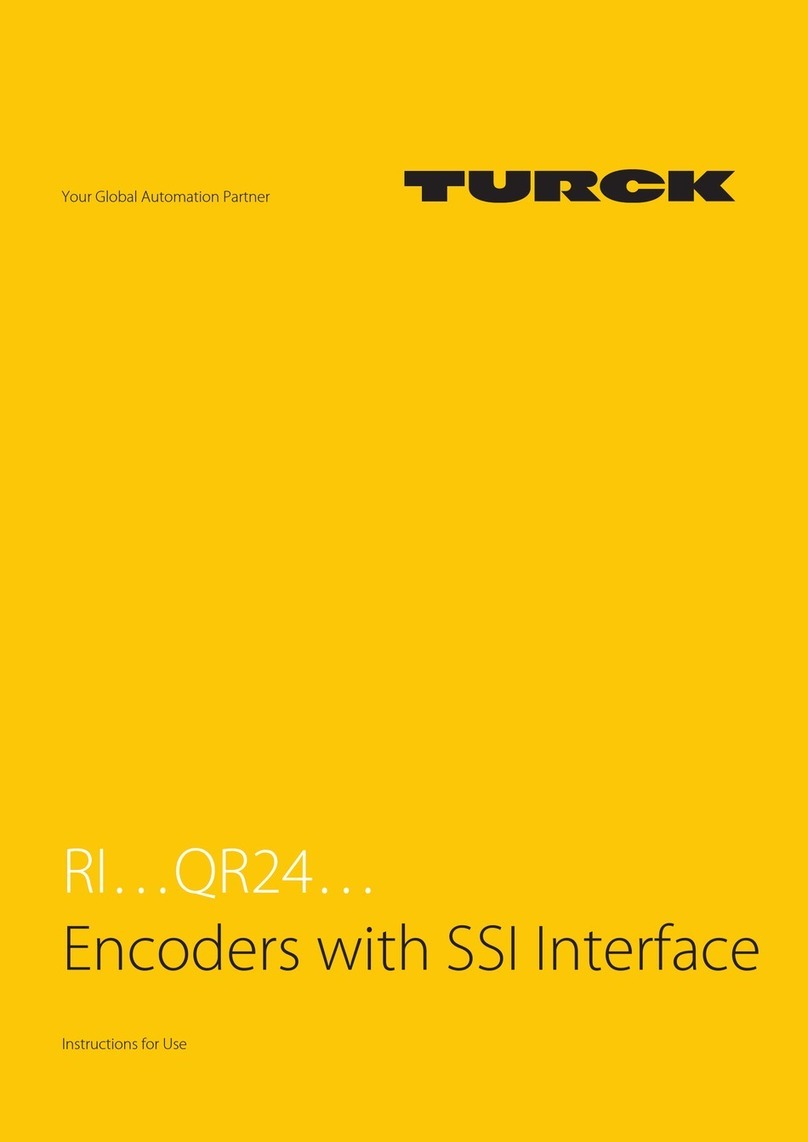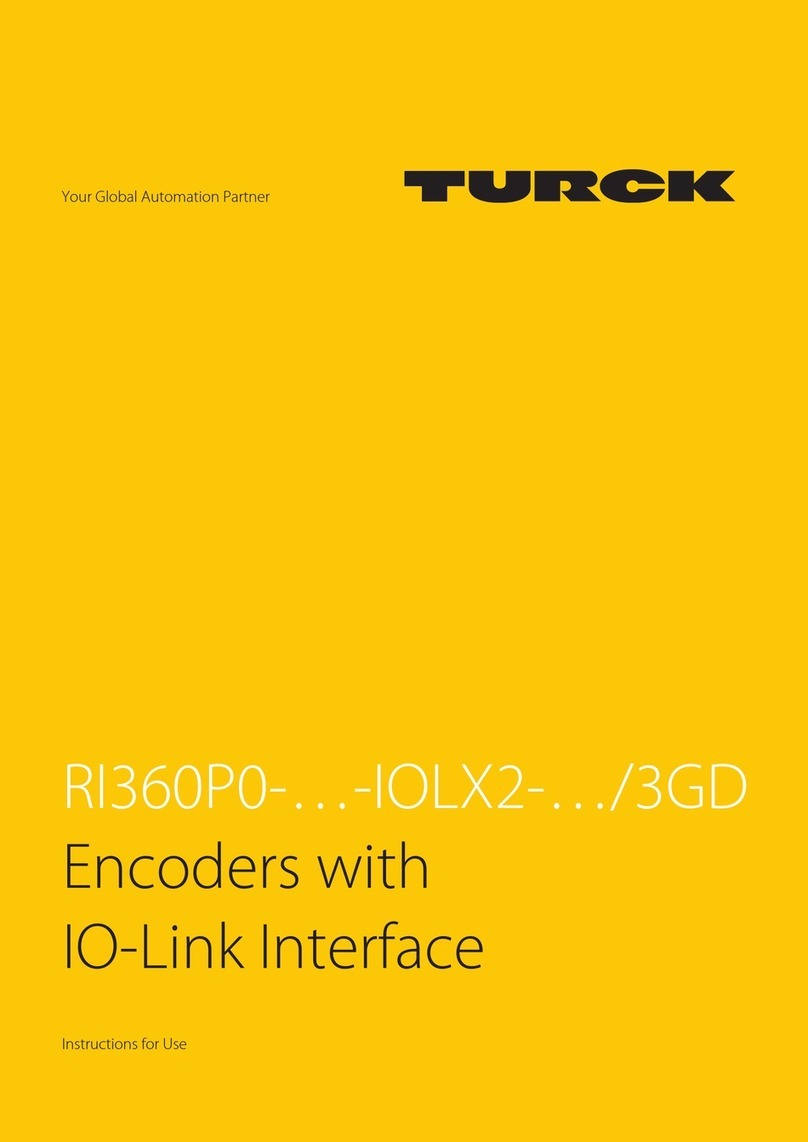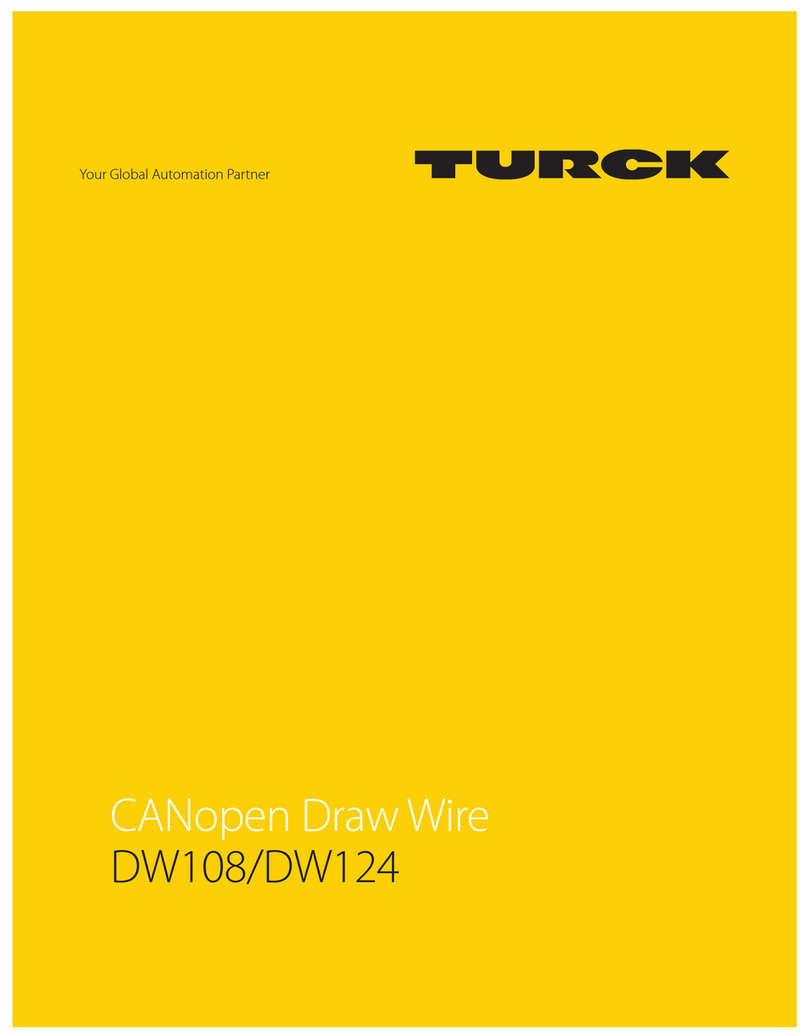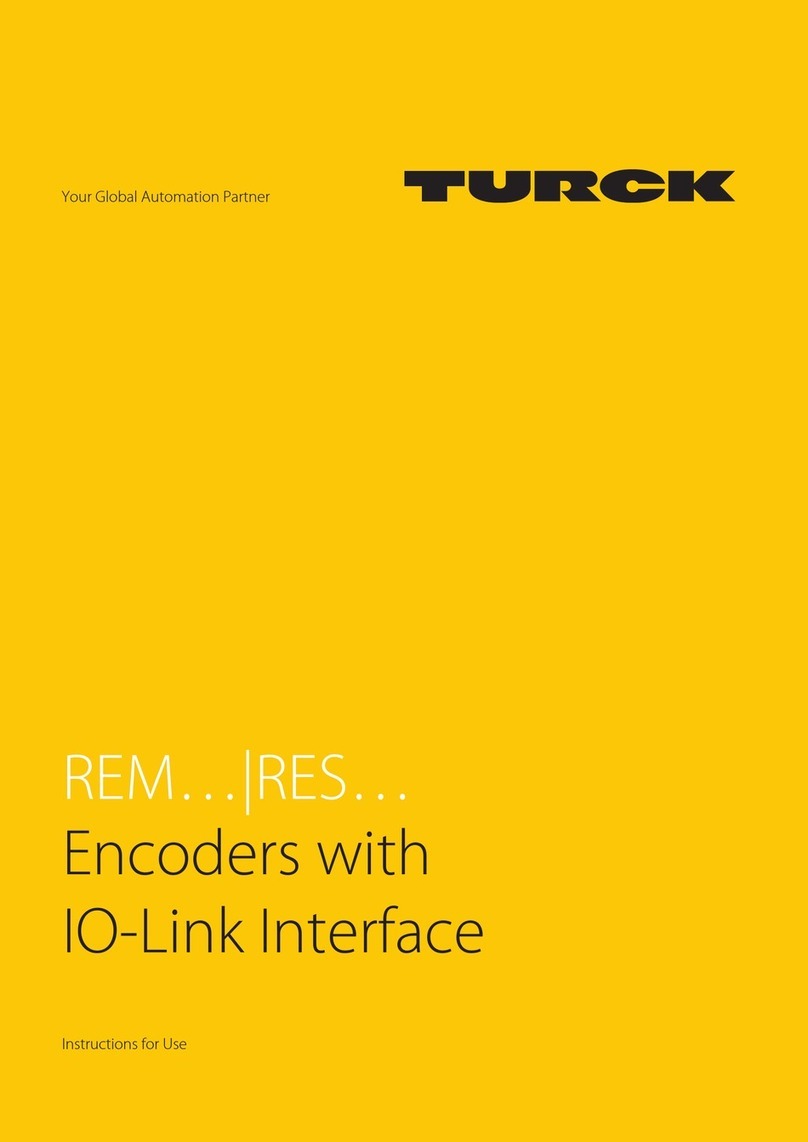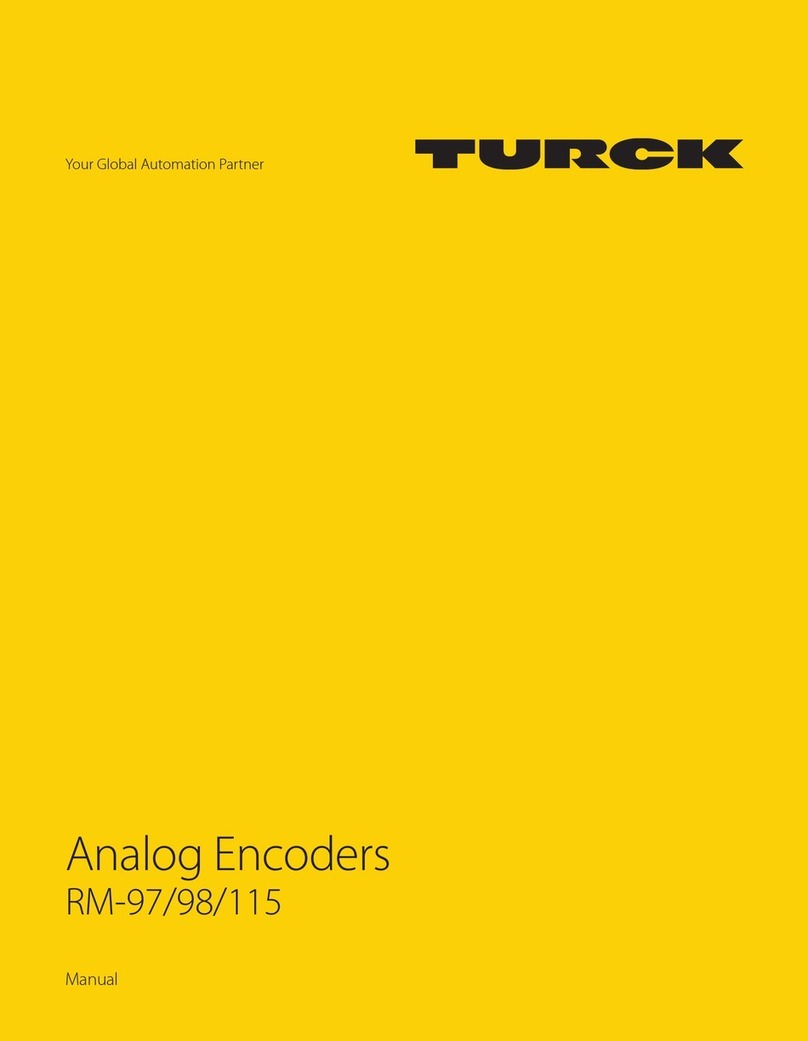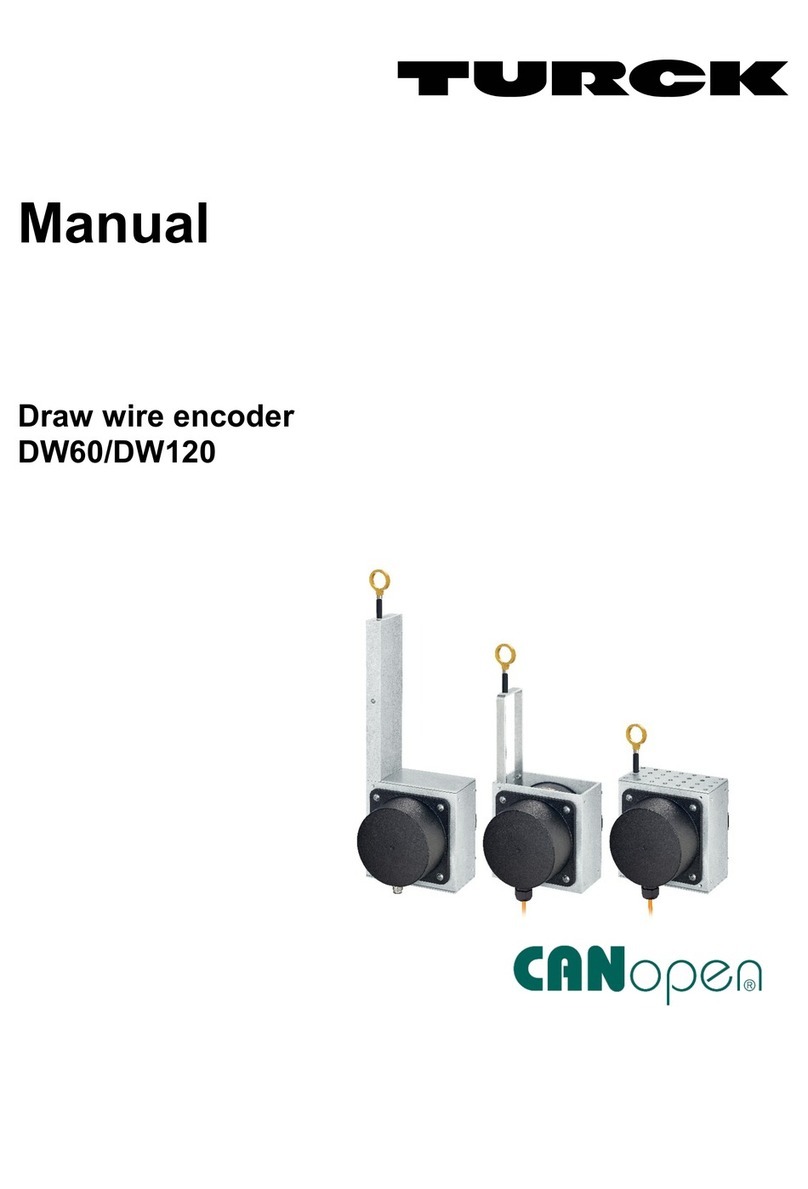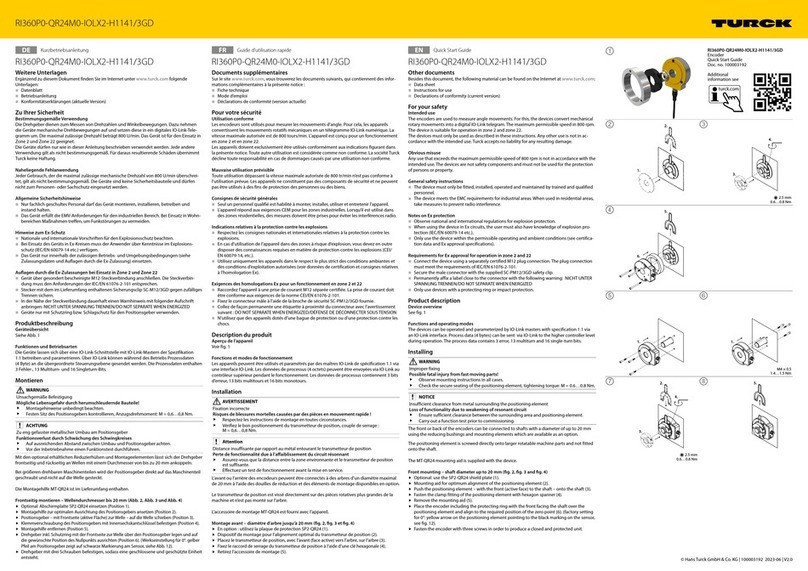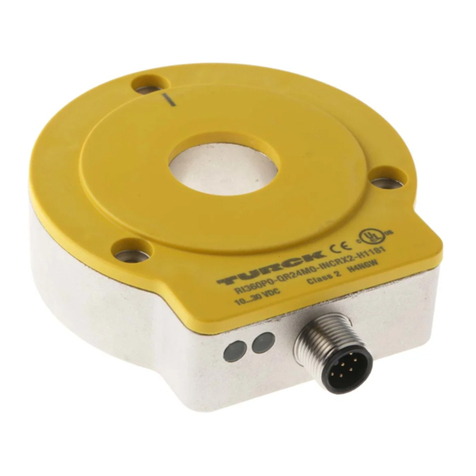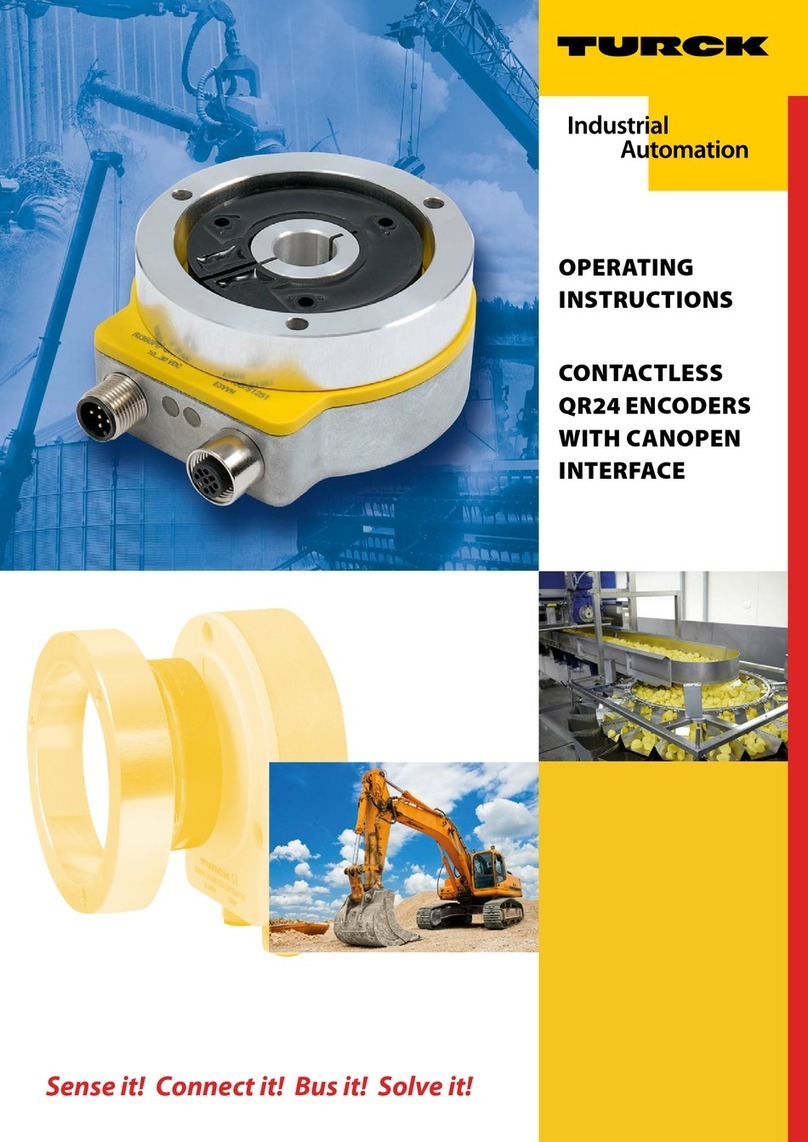
Contents
Hans Turck GmbH & Co. KG | T +49 208 4952-0 |
[email protected] | www.turck.com
V02.00 | 2022/10 | 2Contents
1 About these instructions ...................................................................................................................4
1.1 Target groups ...................................................................................................................4
1.2 Explanation of symbols used.........................................................................................4
1.3 Other documents.............................................................................................................4
1.4 Feedback about these instructions ..............................................................................4
2 Information About the Product........................................................................................................5
2.1 Product identification .....................................................................................................5
2.2 Scope of delivery..............................................................................................................5
2.3 Turck service .....................................................................................................................5
3 For Your Safety ....................................................................................................................................6
3.1 Intended use .....................................................................................................................6
3.2 Obvious misuse ................................................................................................................6
3.3 General safety notes........................................................................................................6
4 Product Description............................................................................................................................7
4.1 Device overview...............................................................................................................7
4.1.1 Display elements ..............................................................................................................................7
4.2 Operating principle .........................................................................................................7
4.3 Functions and operating modes...................................................................................7
4.3.1 Output function................................................................................................................................7
4.3.2 Terminating resistor ........................................................................................................................7
4.4 Technical accessories ......................................................................................................8
5 Installing ...............................................................................................................................................9
5.1 Mounting the solid shaft encoder using a coupling .............................................. 10
5.2 Mounting the hollow shaft encoder using a coupling .......................................... 11
6 Connection ........................................................................................................................................ 12
6.1 Wiring diagram.............................................................................................................. 12
7 Commissioning................................................................................................................................. 13
8 Operation........................................................................................................................................... 14
8.1 LED display..................................................................................................................... 14
9 Setting................................................................................................................................................ 15
9.1 Communication profiles.............................................................................................. 15
9.1.1 Object 0x1000: Device type....................................................................................................... 15
9.1.2 Object 0x100A: Manufacturer software version................................................................. 15
9.1.3 Object 0x1010: Store parameters............................................................................................ 16
9.1.4 Object 0x1011 Restore default parameters (load default values) ............................... 16
9.1.5 Object 0x1017: Producer heartbeat time (heartbeat cycle)........................................... 17
9.1.6 Object 0x1018: Identity object (device identification) .................................................... 18
9.1.7 Object 0x1029: Error behavior.................................................................................................. 18
9.1.8 Object 0x1800: PDO1 parameters (asynchronous)........................................................... 19
9.1.9 Object 0x1801: PDO2 parameters (synchronous, cyclical)............................................. 20
9.1.10 Transmission types ....................................................................................................................... 21
9.2 Creating variable PDO mapping................................................................................ 22
9.2.1 Changing mapping parameters............................................................................................... 22
9.2.2 Standard settings for the mapping of transmit PDOs...................................................... 23
9.2.3 Object 0x1A00: PDO1 mapped object................................................................................... 23
